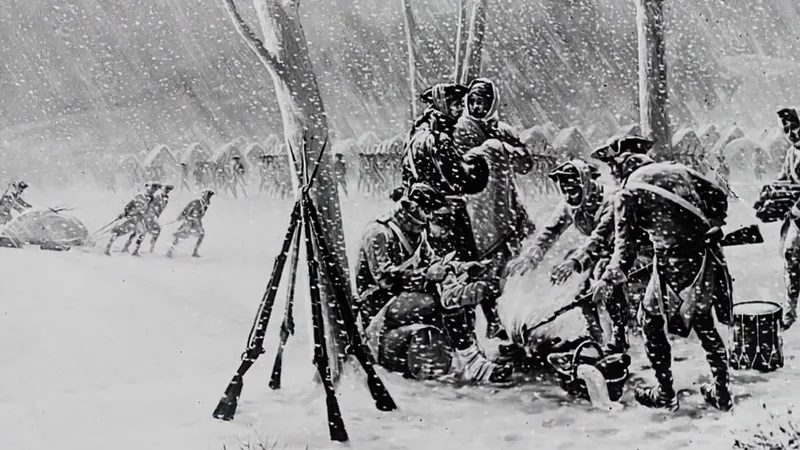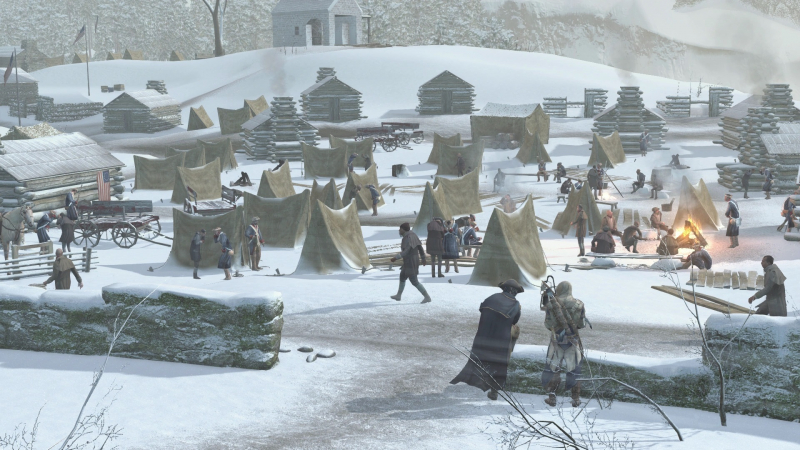Valley Forge was not the coldest winter of the war.

Nearly 250 years of legend have etched the impression of the winter of 1777-1778 as a perpetually snowbound season beset by bone-chilling temperatures, making the winter at Valley Forge the coldest winter of the war. Though the occasional blizzard, ice storm, and scattered snow squalls were relatively common on the Valley Forge encampment, it was by historical standards a fairly mild winter for southeast Pennsylvania. The following winter at Morristown, New Jersey, was a far colder winter.
The army’s commander-in-chief George Washington himself noted that consistently working and drilling in steady, below-freezing temperatures was preferable to slogging through an endless morass of slushy mud stippled with putrefying animal carcasses. Moreover, whenever the temperatures edged above freezing, the noxious veil of gasses escaping from the hundreds of starved horses buried in shallow graves hung over the camp. While it is true that nearly 2,000 of Washington’s soldiers at Valley Forge died from exposure, disease, starvation, or some combination thereof, this was more from a lack of clothing to defend themselves against the ever-shifting elements. Entire regiments were without shoes, and visitors were astonished to find half-naked and barefoot American sentries manning guard posts in the rain wrapped only in tattered blankets and standing on their hats to keep their feet warm.













